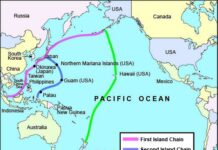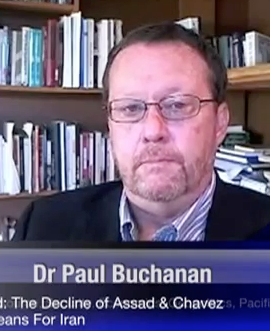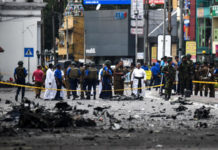A recent speech by New Zealand foreign minister Nanaia Mahuta has sparked a wave of criticism, mostly from conservative Anglophone commentators and politicians. Dubbed the “Taniwha and Dragons” speech, most of the criticism rested on the double premise that NZ is “sucking up” to the PRC while it abandons its obligations to its 5 Eyes intelligence partners. Some have suggested that NZ is going to be kicked out of 5 Eyes because of its transgressions, and that the CCP is pulling the strings of the Labour government.
These views are unwarranted and appear to be born of partisan cynicism mixed with Sinophobia, racism and misogyny (because Mahuta is Maori and both Mahuta and PM Ardern are female and therefore singled out for specific types of derision and insult). Beyond the misinterpretations about what was contained in the speech, objections to Mahuta’s invocation of deities and mythological beasts in the speech misses the point. Metaphors are intrinsic to Pasifika identity (of which Maori are part) and serve to illustrate basic truths about the human condition, including those involved in international relations. As an astute observer noted, imagine if a US Secretary of State was an indigenous person (such as Apache, Cherokee, Hopi, Mohican, Navaho, Sioux or Tohono O’odham, to name a few). It is very possible that s/he would invoke ancestral myths in order to make a point on delicate foreign policy issues.
Hon. Nanaia Mahuta, New Zealand Foreign Minister (photo: New Zealand Labour Party).
This post will clarify a few facts. First, on military and security issues covering the last two decades.
New Zealand has twin bilateral strategic and military agreements with the US, the first signed in 2010 (Wellington Declaration) and the second in 20012 (Washington Declaration). These committed the two countries to partnership in areas of mutual interest, particularly but not exclusively in the South Pacific. New Zealand sent troops to Afghanistan as part of the US-led and UN-mandated occupation after 9/11, a commitment that included NZSAS combat units as well as a Provincial Reconstruction Team (PRT) in Bamiyan Province that mixed humanitarian projects with infantry patrols. More than 3500 NZDF troops were deployed in Afghanistan, at a cost of ten lives and $300 million.
Similarly, NZ sent troops to Iraq after the US invasion, serving in Basra as combat engineers in the early phase of the occupation, then later as infantry trainers for Iraqi security forces at Camp Taji. More than 1000 NZDF personnel were involved in these deployments, to which can be aded the SAS operators who deployed to fight Saddam Hussein’s forces and then ISIS in Iraq and Syria after its emergence. There are a small number of NZDF personnel serving in various liaison roles in the region as well, to which can be added 26 NZDF serving as peacekeepers in on the Sinai Peninsula (there are slightly more than 200 NZDF personnel serving overseas at the moment). In all of these deployments the NZDF worked with and now serves closely with US, UK and Australian military units. The costs of these deployments are estimated to be well over $150 million.
The NZDF exercises regularly with US, Australian and other allied partners, including the US-led RimPac naval exercises and Australian-led bi- and multilateral air/land/sea exercises such as Talisman Saber. It regularly hosts contingents of allied troops for training in NZ and sends NZDF personnel for field as well as command and general staff training in the US, Australia and UK. RNZN frigates are being upgraded in Canada and have contributed to US-led freedom of navigation exercises in the South China Sea (against PRC maritime territory extension projects) and anti-piracy and international sanctions enforcement missions in the Persian Gulf. Among the equipment purchases undertaken during the last two decades, the NZDF has bought Light Armoured Vehicles (Strykers, as they are known in the US), Bushmaster armoured personnel carriers, C-130J “Hercules” transport aircraft, P-8 “Poseidon” anti-submarine warfare and maritime surveillance aircraft, Javelin anti-tank portable missiles and a range of other weapons from 5 Eyes defence contractors. In fact, the majority of the platforms and equipment used by the NZDF are 5 Eyes country in origin, and in return NZ suppliers (controversially) sell MFAT-approved weapons components to Australia, the US, UK , NATO members, regional partners and some Western-leaning regimes in the Middle East.
After the estrangement caused by the dissolution of the ANZUS defence alliance as a result of NZ’s non-nuclear decision in the mid-1980s, a rapprochement with the US began in the aftermath of the 9/11 attacks. The 5th Labour government sought to capitalize on the moment and sent troops into Afghanistan and later Iraq using the cover of UN resolutions to deflect political attacks. That led to improved military-to-military relations between the US and NZ, something that has been deepened over the years by successive NZ governments. The intelligence relationship embodied in the Echelon/5 Eyes agreement was slightly curtailed but never ended even when ANZUS dissolved, and was gradually restored as the main security partnership to which NZ was affiliated. Now the NZDF is considered a small but valued military and intelligence partner of the US and other 5 Eyes states, with the main complaints being (mostly from the Australians) that NZ does not spend enough on “defense’ (currently around 1.5 percent of GDP, up from 1.1 percent under the last National government, as opposed to 2.1 percent in Australia, up from 1.9 percent in 2019) or provide enough of its own strategic lift capability. The purchase of the C-130J’s will help on that score, and current plans are to replace the RNZAF 757 multirole aircraft in or around 2028.
The dispute over US warships visiting NZ because of the “neither confirm or deny” US policy regarding nuclear weapons on board in the face on NZ’s non-nuclear stance was put to rest when the Arleigh Burke-class destroyer USS Sampson (DDG-102) participated in the RNZN 75th anniversary celebrations in November 2016 after an agreement between the then National government and US Department of Defense on assurances that it was not carrying or using nukes as weapons or for propulsion. As if to prove the point of bilateral reconciliation, on the way to the celebrations in Auckland DDG-102 diverted to provide humanitarian support to Kaikura earthquake relief efforts after the tremor of November 14th (the week-long anniversary fleet review involving foreign naval vessels began on on November 17th). A Chinese PLAN warship also participated in the anniversary Fleet Review, so the message conveyed by the first official NZ port visit by a US warship in 30 years was made explicitly clear to the PRC.
The fact is this: the relations between NZ and its 5 Eyes partners in the broader field of military security is excellent, stable and ongoing. That will not change anytime soon.
As for intelligence gathering, NZ is a core part of the 5 Eyes signals intelligence collection and analysis network. Over the years it has moved into the field of military signals intelligence gathering as well as technical and electronic intelligence-gathering more broadly defined. More recently, in light of the emergence of non-state terrorism and cyber warfare/espionage threats, the role of 5 Eyes has been upgraded and expanded to counter them. To that end, in the last decade NZ has received multiple visits from high-ranking intelligence officials from its partners that have dovetailed with technological upgrades across the spectrum of technical and electronic signals intelligence gathering. This includes addressing issues that have commercial and diplomatic sensitivities attached to them, such as the NZ decision to not proceed with Huawei involvement in its 5G broadband rollout after high level consultations with its 5 Eyes partners. More recently, NZ has been integrated into latest generation space-based intelligence collection efforts while the focus of the network returns to more traditional inter-state espionage with great power rivals like China and Russia (we shall leave aside discussion of the benefits that the GCSB and NZDF may receive from Rocket Lab launches of US military payloads but we can assume that they would be significant).
As routine practice, NZSIS and GCSB officers rotate through the headquarters of 5 Eyes sister agencies for training and to serve as liaison agents. Officers from those agencies do the same in NZ, and signals engineers and technicians from 5 Eyes partners are stationed at the collection stations at Waihopai and Tangimoana. GCSB and SIS personnel also serve overseas alongside 5 Eyes employees in conflict zones like Afghanistan and Iraq. While less standardized then the regular rotations between headquarters, these type of deployments are ongoing.
5 Eyes also maintains a concentric ring of intelligence partners that include France, Germany, Japan, Israel, and Singapore. These first-tier partners in turn use their respective capabilities to direct tactical and strategic intelligence towards 5 Eyes, thereby serving as the intelligence version of a “force multiplier” in areas of common interest. One such area is the PRC, which is now a primary focus of Western intelligence agencies in and outside of the Anglophone world. This common threat perception and futures forecasting orientation is shared by the NZ intelligence community and is not going to change anytime soon unless regimes like those in Russia and the PRC change their behaviour in significant ways.
Source: EFF Graphics
For its part, the PRC (the peer competitor with the most interest in New Zealand), has no such complex and sophisticated intelligence networks with which to avail itself. It has intelligence partners in North Korea, Russia, Iran and other small states, but nothing on the order of 5 Eyes. As a result, it is much more reliant on human intelligence collection than its rivals in the 5 Eyes, something that has become a source of concern for the 5 Eyes community and NZ in particular (as the supposed weak link in the network and because of its economic reliance on China, of which more below). While the PRC (and Russia, Israel and Iran, to name some others) are developing their cyber warfare and espionage capabilities, the fact is that the PRC continues to rely most heavily on old-fashioned covert espionage and influence operations as well as relatively low tech signals intercepts for most of its foreign intelligence gathering. NZ’s counter-espionage and intelligence efforts are focused on this threat.
In a word: NZ is committed to the 5 Eyes and has a largely Western-centric world view when it comes to intelligence matters even when it professes foreign policy independence on a range of issues. That is accepted by its intelligence partners, so transmission (of intelligence) will continue uninterrupted. NZ’s relationship with its 5 eyes partners remains strong and committed. It is in this light that Mahuta’s comments about NZ’s reluctance to expand 5 Eyes original remit (as an intelligence network) into a diplomatic coalition must be understood. There are other avenues, multilateral and bilateral, public and private, through which diplomatic signaling and posturing can occur.
That brings up the issue of trade. Rather than “sucking up” to China, the foreign minister was doing the reverse–she was calling for increased economic distance from it. That is because New Zealand is now essentially trade dependent on the PRC. Approximately 30 percent of NZ’s trade is with China, with the value and percentage of trade between the two countries more than tripling since the signing of the bilateral Free Trade Agreement in 2008. In some export industries like logging and crayfish fisheries, more than 75 percent of all exports go to the PRC, while in others (dairy) the figure hovers around 40 percent. The top four types of export from NZ to the PRC are dairy, wood and meat products (primary goods), followed by travel services. To that can be added the international education industry (considered part of the export sector), where Chinese students represent 47 percent of total enrollees (and who are a suspected source of human intelligence gathering along with some PRC business visa holders).
In return, the PRC exports industrial machinery, electronics (cellphones and computers), textiles and plastics to NZ. China accounts for one in five dollars spent on NZ exports and the total amount of NZ exports to China more than doubles that of the next largest recipient (Australia) and is more than the total amount in value exported to the next five countries (Australia, US, Japan, UK and Indonesia) combined. Even with the emergence of the Covid pandemic, the trend of increased Chinese share of NZ’s export markets has continued to date and is expected to do so in the foreseeable future.
Although NZ has attempted to diversify its exports to China and elsewhere, it remains dependent on primary good production for the bulk of export revenues. This commodity concentration, especially when some of the demand for export commodities are for all intents and purposes monopolized by the Chinese market, makes the NZ economy particularly vulnerable to a loss of demand, blockages or supply chain bottlenecks involving these products. Although NZ generates surpluses from the balance of trade with the PRC, its reliance on highly elastic primary export commodities that are dependent on foreign income-led demand (say, for proteins and housing for a growing Chinese middle class) makes it a subordinate player in a global commodity chain dominated by value-added production. That exposes it to political-diplomatic as well as economic shocks not always tied to market competition. Given the reliance of the entire economy on primary good exports (which are destined mainly for Asia and within that region, the PRC), the negative flow-on effects of any disruption to the primary good export sector will have seriously damaging consequences for the entire NZ economy.
That is why the Foreign Minister spoke of diversifying NZ’s exports away from any single market. The only difference from previous governments is that the lip service paid to the “eggs in several baskets” trade mantra has now taken on urgency in light of the realities exposed by the pandemic within the larger geopolitical context.
Nothing that the Labour government has done since it assumed office has either increased subservience to China or distanced NZ from its “traditional” partners. In fact, the first Ardern government had an overtly pro-Western (and US) slant when coalition partners Winston Peters and Ron Mark of NZ First were Foreign Affairs and Defence ministers, respectively. Now that Labour governs alone and NZ First are out of parliament, it has re-emphasized its Pacific small state multilateralist approach to international affairs, but without altering its specific approach to Great Power (US-PRC) competition.
The situation addressed by Mahuta’s speech is therefore as follows. NZ has not abandoned its security allies just because it refuses to accept the premise that the 5 Eyes be used as a diplomatic blunt instrument rather than a discreet intelligence network (especially on the issue of human rights); and it is heavily dependent on China for its economic well-being, so needs to move away from that position of vulnerability by increasingly diversifying its trade partners as well as the nature of exports originating in Aotearoa. The issue is how to maintain present and future foreign policy independence given these factors.
With those facts in mind, the Taniwha and Dragon speech was neither an abandonment of allies or a genuflection to the Chinese. It was a diplomatic re-equilibration phrased in metaphorical and practical terms.
36 Parallel Assessments (36th-parallel.com) is a geopolitical assessment and strategic analysis consultancy that specialises in issues of political risk, market intelligence and futures forecasting.
















